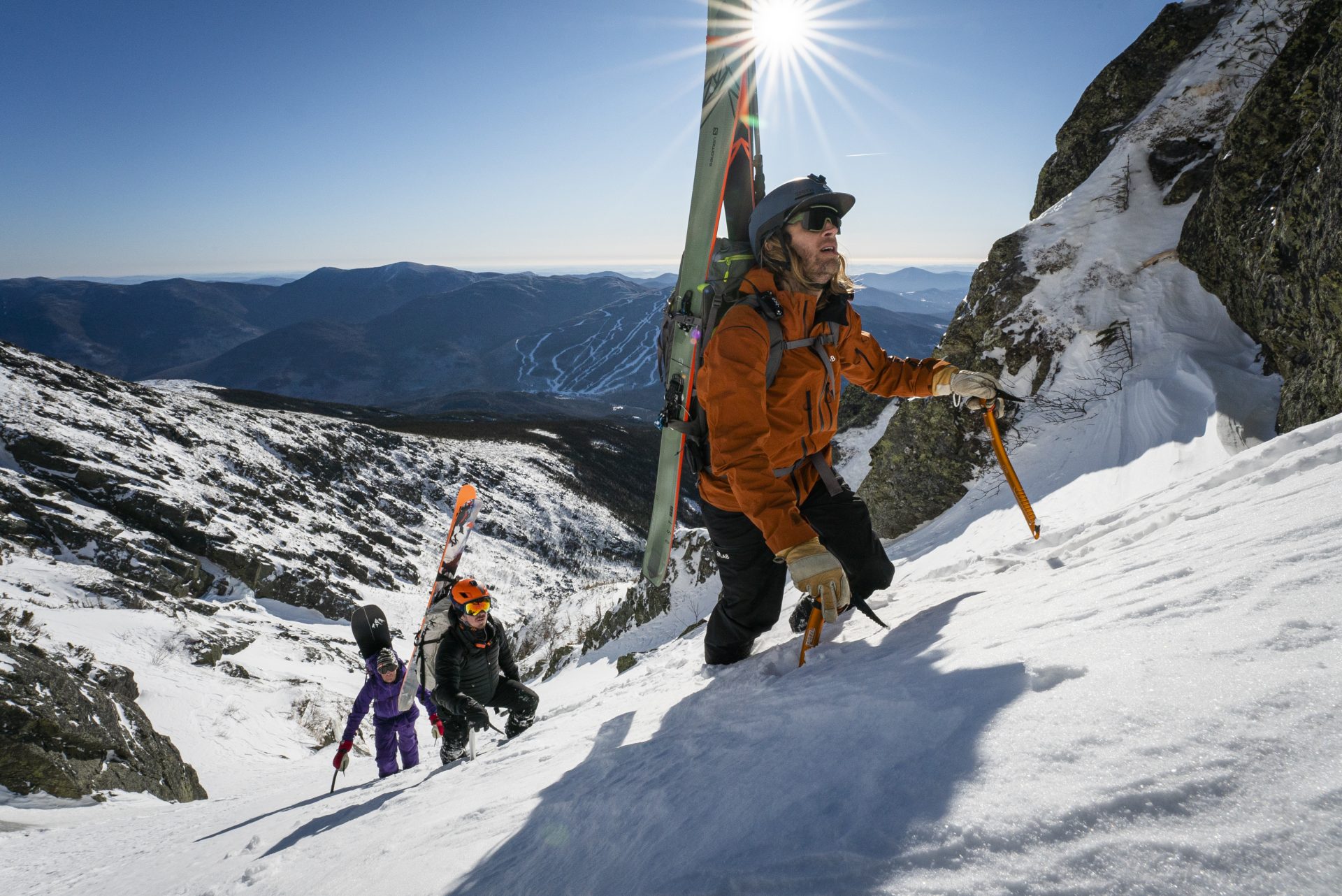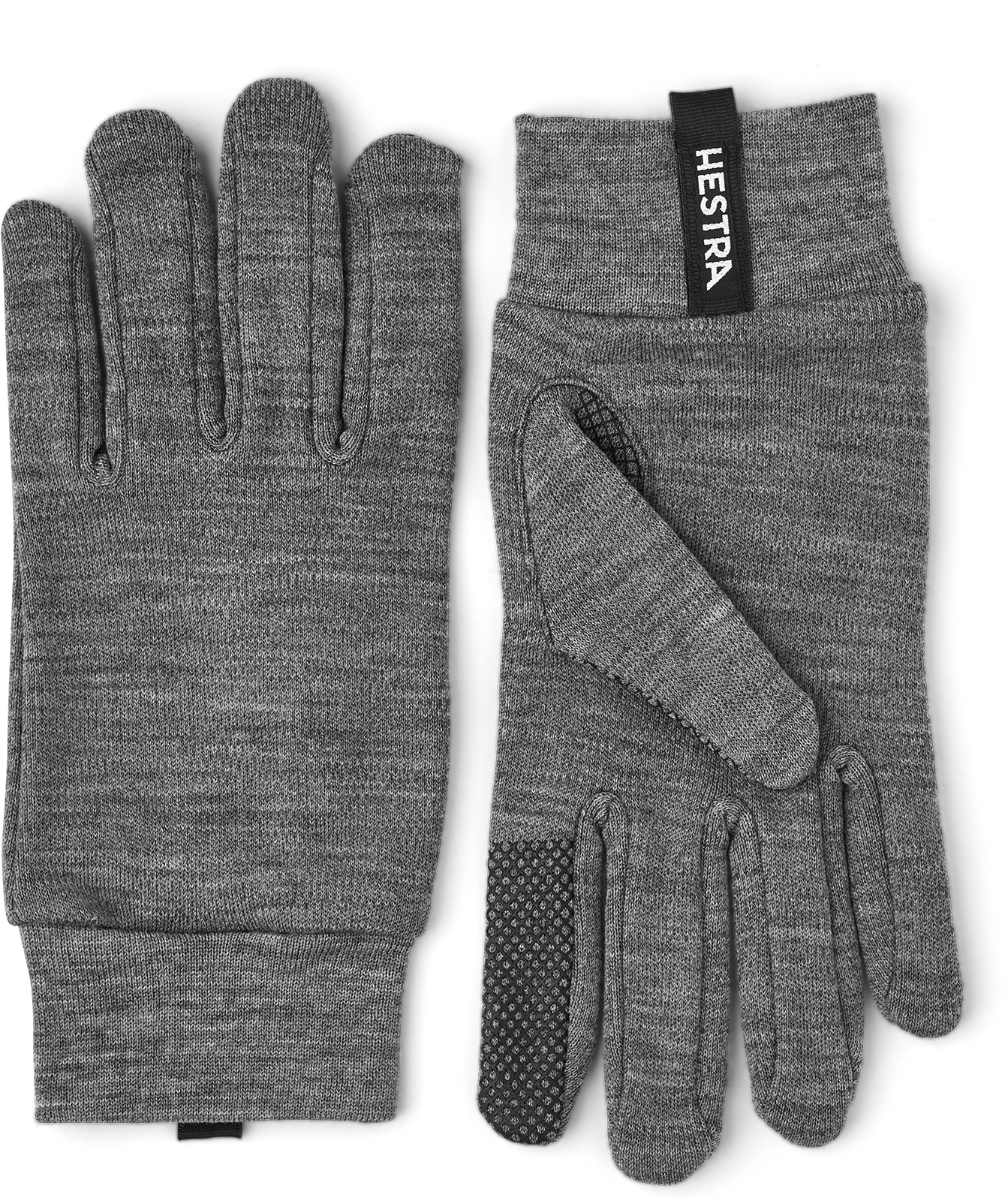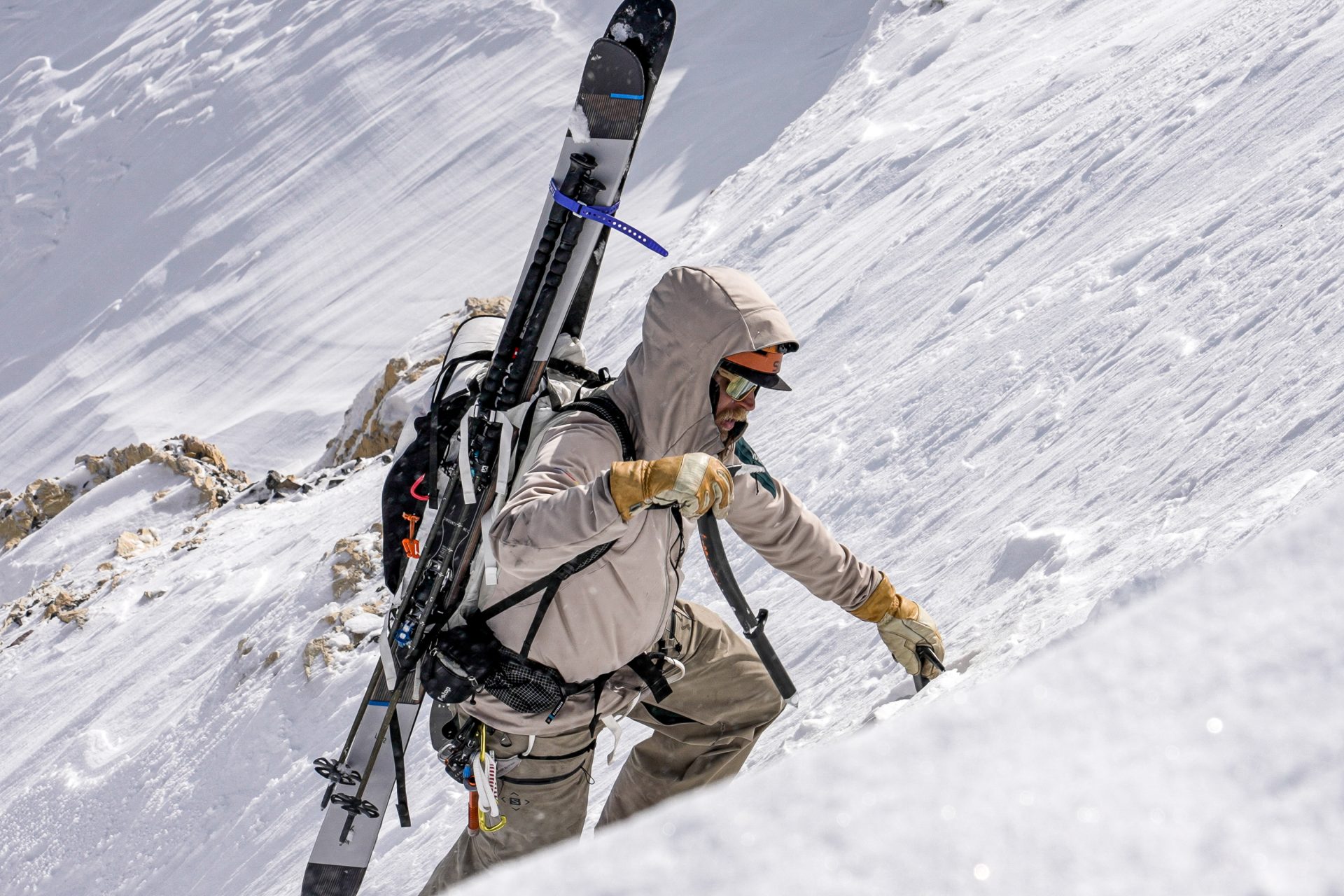
We use our hands a lot in the mountains. Sure, our legs do the brunt of the work when it comes to climbing and skiing lines. But our hands play a vital role, whether swinging an ice axe, managing ropes and gear, or even just pulling out a snack to stay fueled throughout the day. In all of these essential but necessary functions, dexterity is critical. And the key to having dexterous fingers? Warm hands! Just like we use layering (base layer, mid layer, shell) to insulate our bodies, the same principle can and should be applied to our hands and the gloves we choose to utilize. Here’s why:
A brief lesson on physiology:
You’ve certainly experienced it, though you may not have consciously thought about it, but when your body gets cold, your hands and feet are the first to feel it. This is because your extremities are the furthest away from your most vital organs – brain, heart, spinal cord, & gastrointestinal tract. Our bodies are quite adept at adapting to adverse conditions to keep us alive. However, it often comes at a tradeoff. In this case, our bodies sacrifice the warmth of our hands and feet to protect our vital organs. And as we all now understand, when this occurs, our ability to use our hands for critical tasks in the alpine diminishes greatly. Plus, who likes having frozen fingers anyway?
The issue with a ‘quiver of one’ when it comes to gloves:
That pair of gloves sitting in your ski bag works great a decent amount of the time. The problem is that mountain climates are hugely dynamic. Weather and temperatures can fluctuate drastically between the bottom and the top of a lift. And while on a ski tour, your hands can go from popsicles during an alpine start to sweaty and overheated as soon as the sun comes up. With only one pair of gloves, the only ‘adjustment’ you can make is on or off. This inability to fine-tune leads to a ‘Goldilocks’ scenario where you’re either too hot or too cold; sadly, there is no just right. Layering makes all the difference in moments like these, so let’s dive in.

Base Layers:
Did you know that adding a base layer under your gloves increases your hand warmth by 20%? Liners like the Hestra Multi-Active Liners should be your first line of defense from the elements when it comes to layering. In addition to increased warmth under gloves, the benefits of liners are threefold. First, liners are moisture-wicking. Whether synthetic or made out of merino wool, this keeps the sweat off your hands and dry throughout the day. And it should go without saying, but dry hands equal warmth!
Second, liners are the most breathable item in your layering quiver. On warm ski touring days or when riding spring laps at the resort, a pair of liners is the perfect option for when temps are too high to wear mittens or gloves. Liners still provide warmth for your hands and protection from the snow, but the combination of breathability and moisture-wicking technology is ideal when conditions warm up.
Third and finally, liners offer the most dexterity out of any glove in your layering quiver. This comes in handy when riding the lift on those cold storm days. Instead of removing your main glove and exposing your bare hand to the elements to grab a snack out of your pack, keeping your liners on underneath allows you to maintain full dexterity while adequately protecting your hand from the cold. As a side note, if you frequently remove your gloves on the lift, consider getting some Hestra Handcuffs to avoid losing one of your beloved gloves!

Gloves:
If there were ever a daily driver in your layering quiver, it would be your primary pair of gloves. For most days in the mountains, gloves will likely be your main equipment protecting your hands from the elements. There are a lot of different styles of gloves on the market, and Hestra has some great options, but before dropping cash on just any pair of gloves, there are a few questions you need to ask yourself.
First, do you tend to naturally run hot or cold? Depending on which side of the spectrum you lean on greatly affects what kind of gloves are right for you. For those who run cold (like, really cold), the Power Heater Gauntlet might be something to consider. Consider a glove like the Army Leather Patrol for others who skew towards running warm.
Another consideration that ties into warmth is your preference for a five-finger glove, a three-finger glove, or a mitt. All three bring unique benefits to the table, and the climate you recreate and your preferred choice of how you recreate is important to consider when making that choice. We’ll start with mitts.
Mitts or mittens are the warmest of the three options because your fingers can share the warmth. And unlike gloves, they have less total surface area for body heat to escape. If you spend most of your time skiing in freezing mountain climates or constantly chasing storms for soul-filling powder turns, then a pair of mitts is likely the right option.
Three-finger gloves are the perfect hybrid between a mitt and a five-finger glove. Three-finger gloves provide the warmth of a mitt for your middle, ring, and pinky finger while giving you ample dexterity by allowing your index finger to move independently. Three-finger gloves are an excellent choice for skiers who prioritize warmth without sacrificing dexterity.
Five-finger gloves still offer considerable warmth but less than their two counterparts. Where five-finger gloves shine is their ability to allow each finger to move freely and independently, giving you maximum control and dexterity. Five-finger gloves are an excellent choice for riders who recreate in relatively warmer mountain climates or for folks like ski mountaineers who need ample dexterity to manage ropes and gear.
A few final considerations to make before purchasing a glove are whether you like the cuff of your glove to go under or over your jacket (Hestra makes gloves for both!) and whether or not you have a sensitivity to wool on your skin (If sensitive, choose synthetic insulation). No matter your preferences, Hestra has gloves to accommodate everyone from the powder-lapping soul-skier to the grizzled ski mountaineer.

Shells:
The final component of any good layering quiver is a shell. Shells are the outermost layer of protection and are the perfect last line of defense for when conditions turn sour. Most gloves are water resistant, but shells are completely water and windproof. When boot packing a line, a pair of shells allows you to put your hands in the snow without letting any moisture build up on your primary pair of gloves. In short, shells over your main glove protect you entirely from the elements, allowing you to confidently make that final push to the summit or keep shredding fresh snow on the coldest and windiest of winter days.
Layer like the Pros:
Cody Townsend, a professional skier and pursuant of the massive FIFTY Project, is a huge advocate of proper layering regarding gloves. He even discusses it in-depth in a video, breaking down his clothing and layering set-up for the project. For those who are curious, here is Cody’s go-to glove quiver for The FIFTY:
- Merino Touchpoint Liner
- Falt Guide Glove
- Pull Over Mitt
- Often seen touring in Ergo Grip Active Wool Terry and Skiing in Army Leather Wool Terry.
Layer up:
To wrap up, glove layering is the best thing you can do to protect your hands while in the mountains. The ability to fine-tune your set-up gives you the most control over temperature regulation, dexterity, resistance to the elements, and breathability. Plus, a layering system is far less bulky than carrying three gloves and mitts simultaneously. Regardless, when we need our body to perform at its best in rugged mountain environments, it only makes sense that we layer up and dress for success.